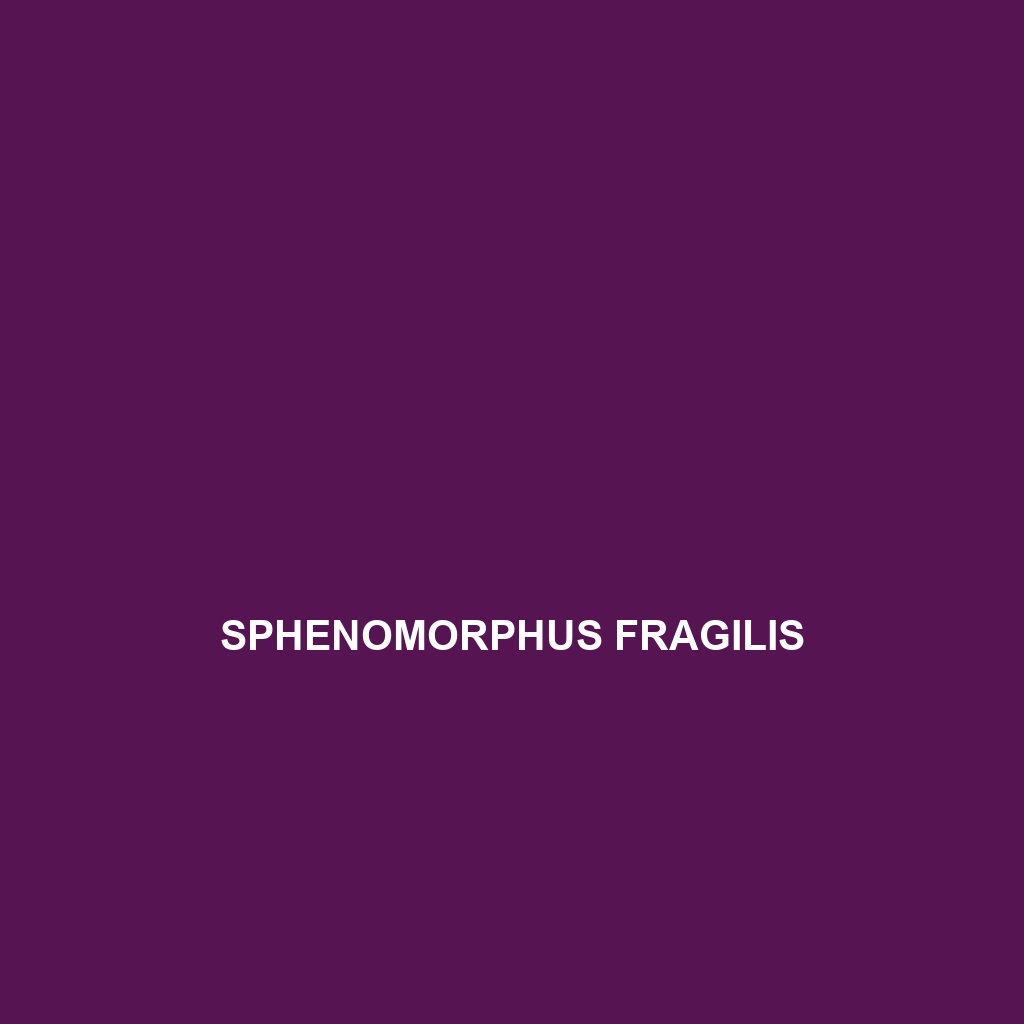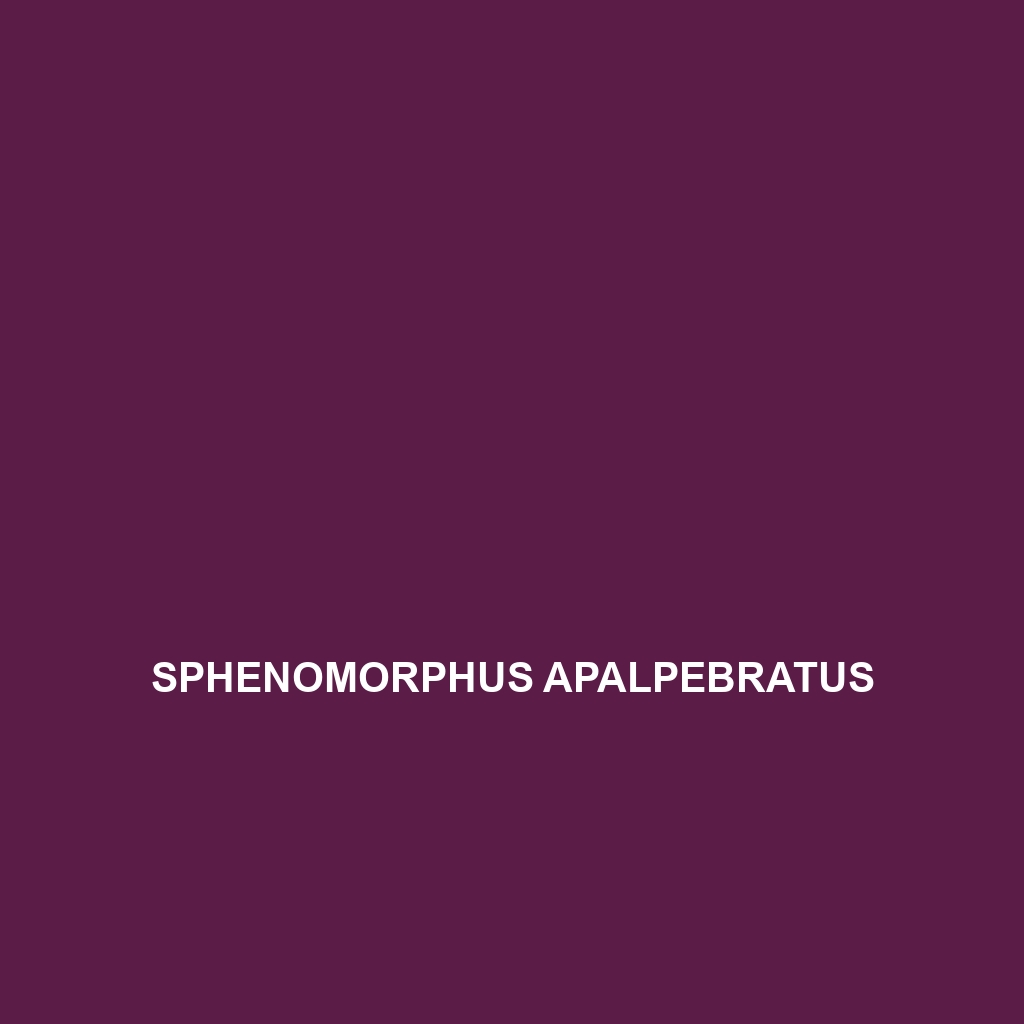<p><b>Sphenomorphus malaisei</b>, a medium-sized skink native to Southeast Asian rainforests, features a streamlined body measuring 15 to 25 cm and exhibits a rich brown to dark green coloration, aiding in its camouflage. This insectivorous species is known for its agility and unique defense mechanism of tail dropping when threatened, making it a crucial part of its ecosystem.</p>
Tag: Habitat Destruction
Sphenomorphus maculatus
<p><b>Sphenomorphus maculatus</b>, also known as the spotted skink, is a slender, 10-15 cm long reptile found in tropical rainforests of Southeast Asia, characterized by its brown or gray body adorned with dark spots. As an insectivore, it plays a vital role in maintaining ecological balance while showcasing unique behaviors, including noteworthy climbing abilities and a diurnal lifestyle.</p>
Sphenomorphus loriae
<p><b>Sphenomorphus loriae</b> is a vibrant, diurnal lizard native to the rainforests of Papua New Guinea and Indonesia, characterized by its slender body, smooth scales, and ability to camouflage. As an insectivore, it plays a vital role in controlling insect populations while also serving as prey for larger predators, making it an important species within its ecosystem.</p>
Sphenomorphus haasi
<p><b>Sphenomorphus haasi</b>, commonly found in the rainforests of Southeast Asia, is a slender skink measuring 15 to 30 cm in length, known for its brown or dark green coloration that offers excellent camouflage. As an insectivore, it plays a crucial role in its ecosystem by regulating insect populations while also serving as prey for various predators.</p>
Sphenomorphus fragilis
<b>Sphenomorphus fragilis</b>, commonly known as the fragile skink, is a slender, olive-brown skink found in Southeast Asia's humid rainforests. This diurnal insectivore thrives in dense vegetation and plays a critical role in the ecosystem by controlling insect populations and serving as prey for larger predators.
Sphenomorphus celebensis
Introducing the Sphenomorphus celebensis, or Celebes skink, a striking lizard native to the rainforests of Indonesia, particularly Sulawesi. This diurnal, insectivorous species is known for its glossy brown or olive-green coloration, distinctive stripes, and ability to regenerate its tail, making it a vital contributor to the ecosystem.
Sphenomorphus apalpebratus
Sphenomorphus apalpebratus, commonly known as the smooth-skinned skink, is a slender, nocturnal reptile found in tropical rainforests and temperate forests of Southeast Asia, characterized by its shiny scales and distinctive brown to green coloration. This insectivorous skink plays a vital role in controlling insect populations and contributes to its ecosystem's biodiversity.
Sphenomorphus acutus
Discover the Sphenomorphus acutus, or sharp-nosed skink, a slender, nocturnal lizard thriving in Southeast Asia's humid rainforests. With its distinctive pointed snout and insectivorous diet, this agile skink plays a crucial role in regulating insect populations and maintaining ecological balance.
Sphaerodactylus williamsi
Discover the Sphaerodactylus williamsi, also known as Williams’ Sphaero, a small, nocturnal gecko native to the rainforests of the Bahamas. With distinctive brown and tan patterns, this vital insectivore plays a key role in maintaining ecological balance while thriving in its humid, tropical habitat.
Sphaerodactylus sputator
Discover the Antiguan sphaero, or Sphaerodactylus sputator, a small, vibrant lizard native to Antigua and its surrounding islets, thriving in diverse habitats like rainforests and sandy beaches. Known for its unique toe pads and insectivorous diet, this species plays a vital role in controlling insect populations and maintaining ecosystem balance.









